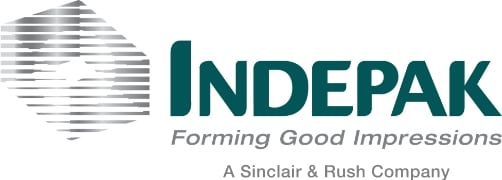Here in Portland, being eco-friendly is a bit of an obsession, to say the least. For instance, more than 50% of our city’s energy is produced by renewable sources. As a Portland-based company, we obviously are committed to reducing our environmental footprint, and that includes offering our clients an assortment of eco-friendly options, including the following:
1. Easy-To-Recycle Materials
Portlanders love to recycle, and we consistently make it near the top of the list of cities with the highest recycling rates. When it comes to thermoformed packaging, virtually all of the plastic materials we use can be recycled, but some materials are easier to recycle than others.
If sustainability is one of your top concerns, we highly recommend that you select materials for your thermoformed packaging that are easy for consumers to recycle. The two plastics most widely accepted by curbside recycling programs are polyethylene terephthalate (PET) and high-density polyethylene.
These two materials can be used to make food & beverage packaging, medical & pharmaceutical packaging, retail packaging and much more. At Indepak, we’ve been creating clamshells, blisters and trays using PET and HDPE for decades, and we can create just about any type of thermoformed packaging that you might need.
2. Recycled Content
Thermoformed packaging can be produced using new materials or materials with recycled content, either post-consumer or pre-consumer. We can design packaging made from 100% recycled content, 50% recycled content or another amount. It takes less energy to recycle plastic than it does to produce new plastic, so using recycled content can be a great eco-friendly option.
Again, you also can use materials such as recycled PET or recycled HDPE, to ensure that it’s as easy as possible for your customers to recycle their packaging. We also highly recommend that you highlight this information on your labeling. More and more consumers are making choices based upon the sustainability factor, and if it’s obvious that your company is making eco-friendly choices, this can push consumers to select your product over a less eco-friendly option.
3. Combination Designs
Your package doesn’t have to be created entirely using plastic materials. Many items can be placed in packages that feature a combination of paperboard and plastic. This reduces your overall plastic use while still taking advantage of the protective qualities of plastic, which is moisture resistant and more difficult to tamper with than a package created entirely from paper or pulp sources. At Indepak, we are experts at creating trap blisters and other types of combination designs.
4. Bioplastics
Starch-based bioplastics have been around for years, but are just now gaining popularity. Created using renewable sources, these plastics can be used for many types of food packaging and retail packaging. These bioplastics typically are either compostable or biodegradable, which sounds great, but that’s not the whole story.
While many types of garden scraps and food scraps and some cardboard and paper items can be placed in a compost bin or greenwaste bin, not all bioplastic containers can be placed in these bins. It is important that consumers check before tossing a bioplastic container in greenwaste. If the bioplastic container is biodegradable but not compostable, this must be taken to a special facility as it won’t simply biodegrade in a landfill, it needs special conditions to biodegrade. Furthermore, while some bioplastics could be recycled, there just aren’t recycling centers set up for recycling these types of plastic.
So, what’s the answer concerning bioplastics? Only about 30% of all plastic packaging and plastic items are recycled in the United States. The rest ends up in landfills, and while bioplastics also might end up in landfills, they contain no petrochemicals so this is better for the environment. Additionally, as stated before, bioplastics are created using renewable resources, so while recycling and composting isn’t always an option, it’s still a positive step to use a renewable source and many consumers are looking specifically for products made using bioplastic. As the bioplastic market grows and demand increases, recycling options will, no doubt, become readily available for consumers.
5. Smaller Packaging
Sometimes using less is one of your most eco-friendly options. After all, a smaller package uses fewer materials, which is a good thing, earthwise. Additionally, smaller packaging weighs less and more units can be transported during a single shipment. This allows you to expand your market without expanding your carbon footprint.
Because plastic is highly impact-resistant as well as moisture-resistant, you don’t really need tons of packaging in order to protect your products. Our design team can come up with an innovative plan that reduces waste and uses materials that are easy for your customers to recycle.
In addition to offering a myriad of sustainable options for your thermoformed packaging, all of us at Indepak are committed to minimize our impact on the environment. We’ve been reusing, recycling and renewing long before it was popular or required. We are an ISO 140001:2015-certified company, and strive to beyond these requirements, resulting in a very low-waste operation in every part of our company. If you need thermoformed packaging and want to talk about our sustainable options, give us a call at any time.





